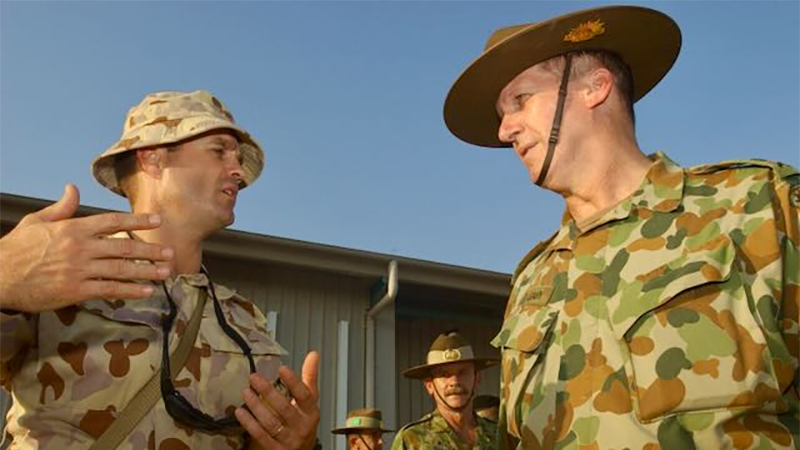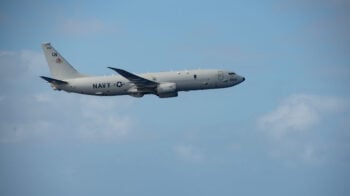
(Left to right) Lt. Col. Short and Chief of the Army, Lt. Gen. Peter Leahy. (LAW Kim Eager ADF)
INDOPAC 2023 — As the US Congress debates crucial changes to arms export laws needed so Australia can buy and build nuclear-powered submarines, a sharp debate has broken into public view over defense spending here.
The former head of the Australian Army, Peter Leahy, recently slammed Anthony Albanese’s government, telling the Australian Broadcasting Corporation it is “ripping the heart out of defense.” Public criticism of the government or the Defence Department by former uniformed officers is rare here.
“I’m really concerned that for this much more complex geostrategic position, we’re actually seeing the Australian Defence Force become less capable and less able to meet the options that might be required in the future,” he told the ABC.
The retired lieutenant general, now a professor of national security at the University of Canberra, also said he doesn’t see “much of a future for defense industry here in Australia, so we’ve got to pick up our game. I don’t think we can be taken seriously in the halls of Washington.”
The shadow defense minister, Andrew Hastie, also knocked the Albanese government in a roundtable with reporters this afternoon.
“The prime minister and the deputy prime minister have both said time and again that we are facing the most dangerous time since the end of the Second World War. And yet their response to that challenge for the DSR (Defense Strategic Review) has been to delay the tough decisions. It’s been to cut defense spending. It’s to cannibalize capability,” Hastie said. “We have yet to see a defense strategy from this government. That’ll be next year sometime. They have the surface fleet review which they commissioned, but that will not be made public until next year.”
In addition to the DSR, the Alabanese government separately commissioned a review of the Australian surface fleet. The results have been given to the government, but the government’s decision about the future of the fleet will not be revealed until next year, the Defence Minister Richard Marles has said.
Marles rejected Leahy’s criticisms, saying they “are just not true.”
“They’re not true. And they really bear a pretty scant relationship to the truth. The fact of the matter is that since coming to power, we have not only committed and fulfilled the commitment of maintaining defense spending on the growth trajectory that we inherited from the former government. We’ve increased it by 10 percent. So, whereas the former government had defense spending going to 2.1 percent of GDP in 2032, we have now put defense spending on a pathway to 2.3 percent of GDP. So there is a significant growth in defense spending above the growth level that we inherited even above the growth level that we committed to at the last election.”
However the Australian Strategic Policy Institute, a government-funded think tank, has said that the Australia defense budget is falling by $1.5 billion AUD for the next three years. However, Marles is right, ASPI said, in pointing to a long-term increase in defense spending.
“New funding for Defence will not be available until the medium-term (2027-28), with a further $30.5 billion provided over the six years to 2032-33. This funding would lift Defence funding to more than 2.3 [percent] of GDP, based on Treasury’s economic projections,” the ASPI report’s authors said.
Here on the floor of the Indo Pacific maritime conference, three industry sources supported Leahy’s criticisms, noting that their order books are not seeing much benefit from the Albanese government.






















